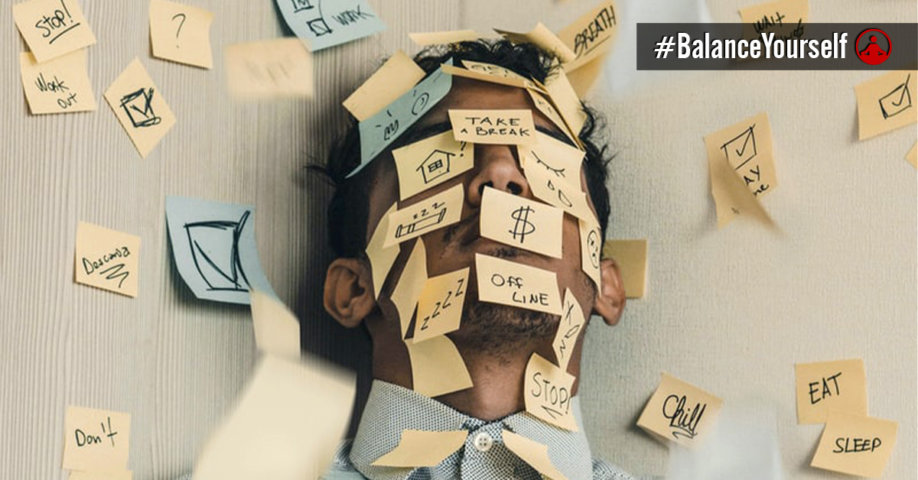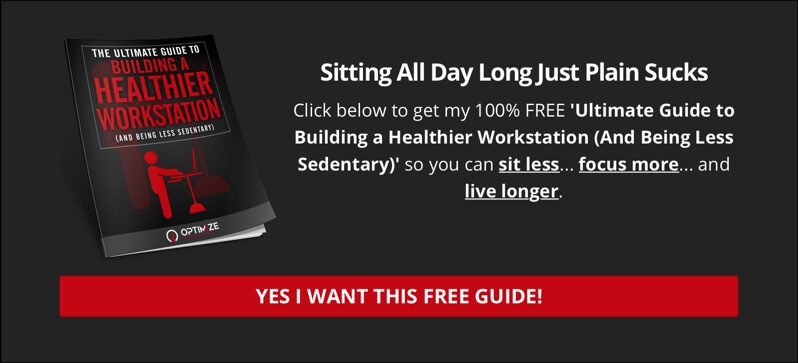Editor’s Note: The following article is from film & television editor Debby Germino (Fargo, Agents of S.H.I.E.L.D., Smallville, Genius), who is also the founder and author of the blog Happiness In Training.
» Click here to download Debby’s “Happiness In Training” Starter Kit
Another Tuesday morning…or is it Wednesday? (Honestly who cares at this point.)
I climb out of bed. Roll out my yoga mat. Fire up the computer. Zoom launches and my yoga teacher greets me and the 15 other virtual students with a warm welcome and we get under way. Various disruptions, including my dog barking and me yelling at him to be quiet, keep me from feeling fully present. When we get to shoulder stand, I bail out early. I end up watching the rest of class as a passive viewer with my video off.
Six months into a pandemic, I’m 100% confident that “Zoom Fatigue” is real.
Anyone else tired of Zoom classes, meet-ups, events, conferences, retreats?
Give it a fancy name or not, it’s still me sitting in my same house, staring at my same computer, pretending that this virtual yoga class is just as good as going to the yoga studio. IT’S NOT!
There are days when I’m sick of holding it together and I’m annoyed that I have to wear a mask and I’m angry I can’t hug my friends. Yet, at the same time, my empathy is on overdrive and my heart bleeds for the endless suffering being experienced due to COVID, unemployment, racial injustice, and natural disasters.
All these feelings, emotions, and turmoil are happening all at once….sometimes in a matter of minutes. And it’s exhausting. It’s confusing and unsettling.
At first, we thought it was temporary. We just have to “buckle down “and wait this out a few weeks. So we went into survival mode and allowed for some rules to bend. Maybe some bad habits slipped in. Evening cocktails while social distancing with the neighbors was a novel idea at first. But then an evening became a few days in a row, became a few weeks in a row. And now months later that novel cocktail has become a nightly habit.
And on top of that, the pandemic seems to be taking a back seat to even grander horrifying events. That “10,000 steps a day” pledge becomes burdensome when you can’t even leave the house because the air quality from the raging wildfires is prohibitive. These larger global problems have swallowed our energy and diverted our attention in potentially destructive ways. Our basic needs are being neglected at a time when they most need tending to.
So how do we get back on track when we’re exhausted by Zoom calls, overwhelmed by global upheaval, and we’re frankly wondering “what is the point?”
Start with the basics.
The following article outlines five simple strategies to help you take better care of your foundational needs so you can breeze through those Zoom classes, let go of those bad habits, and find the joy that you thought was lost for good.
- Hydrate yourself
- Move yourself
- Breathe better
- Eat mindfully
- Practice happiness
And for those of you who’ve already mastered the basics, I’ve given you multiple options to help you both level up and then ultimately Optimize Yourself (see what I did there?).
Are you drinking enough water?
 Water makes up two-thirds of the weight of a healthy body and is responsible for a multitude of bodily functions as well as keeping our energy levels up and regulating moods. We all know that we can’t survive more than a few days without water, yet 75% of Americans are chronically dehydrated. According to Superfood Hunter Darin Olien, we need 1/2 oz of water per pound of body weight. The average American drinks only 2.5 cups of water per day. Being even slightly dehydrated can deplete our energy and diminish our ability to think clearly.
Water makes up two-thirds of the weight of a healthy body and is responsible for a multitude of bodily functions as well as keeping our energy levels up and regulating moods. We all know that we can’t survive more than a few days without water, yet 75% of Americans are chronically dehydrated. According to Superfood Hunter Darin Olien, we need 1/2 oz of water per pound of body weight. The average American drinks only 2.5 cups of water per day. Being even slightly dehydrated can deplete our energy and diminish our ability to think clearly.
An easy way to know if you are getting enough water is by looking at the color your pee. Does it look like lemonade or more like iced tea? You want it to be a light yellow color similar to lemonade. If it’s darker than that, you are likely dehydrated.
- Listen & Learn: Ep122: ‘Superfood Hunter’ Darin Olien On How To Be Healthy, Fit, and Eternally Awesome
The Basics
If you hate math and want a general guideline, aim to drink 8-10 glasses of filtered water a day. If you drink bottled water, buy it in glass bottles. The chemicals in plastic are toxic and will inhibit the body’s ability to hydrate and absorb nutrients.
If 8-10 glasses sounds like a lot of water to you, here’s some simple ways to build up to the guidelines:
- First thing in the morning (while you’re waiting for your coffee to brew), drink a glass of water.
- Set a water break reminder on your phone a few times a day.
- Drink a glass of water an hour before bed and see your sleep improve.
- If you hate the taste of water, squeeze a lemon in it, and then eat a Nature’s Miracle Berry. This tiny berry temporarily changes the taste of sour into sweet, making your water into lemonade without the added sugar.
Level Up
If you want to ensure that your body is absorbing all the water you give it, you’ll want to invest in a good filtration system. Zack’s interview with Darin Olien discusses the best options, taking into account budget and convenience. The short list is distillation and reverse osmosis (RO) systems. I would also recommend Pure Effects water filter as an over or under the counter option that removes the same toxins as RO and distillation but does not strip the minerals or waste the amount of water that other processes do.
Optimize Yourself
If you really want to supercharge your water, try adding molecular hydrogen tablets to your daily water consumption. It’s a small, tasteless tablet that you dissolve in a glass of water and drink immediately. The benefits are massive, and it’s quickly becoming the new “wonder supplement” in the biohacking and fitness communities. According to Quicksilver Scientific,
“Research has shown the benefits of molecular hydrogen being wide-spread, acting as a powerful antioxidant, supporting cognitive health and athletic performance, promoting healthy metabolism and helping in the activation of the body’s natural detoxification system.”
Are you moving your body every day?
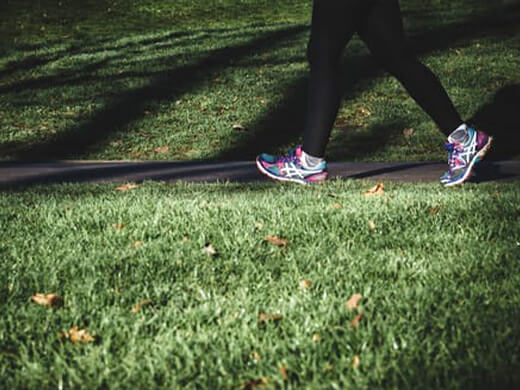 With a little extra hydration giving you a much-needed boost, your next priority is focusing on regular movement throughout the day. Movement is one of the simplest ways to stay healthy, energized, focused, and creative. Our bodies were designed to move and when we move it keeps the blood circulating and the juices flowing. Kelly McGonigal writes about “hope molecules” that get released in our bodies when we exercise, in her book The Joy of Movement.
With a little extra hydration giving you a much-needed boost, your next priority is focusing on regular movement throughout the day. Movement is one of the simplest ways to stay healthy, energized, focused, and creative. Our bodies were designed to move and when we move it keeps the blood circulating and the juices flowing. Kelly McGonigal writes about “hope molecules” that get released in our bodies when we exercise, in her book The Joy of Movement.
“Hope molecules,” also known as myokines, preserve dopamine neurons and reduce inflammation in our brains, combating a wide range of conditions like depression and Parkinson’s. Regular exercise has been shown to release these molecules, meaning that hope can literally begin in our muscles…Physical activity influences many other brain chemicals, including those that give you energy, alleviate worry, and help you bond with others. It reduces inflammation in the brain, which over time can protect against depression, anxiety, and loneliness. Regular exercise also remodels the physical structure of your brain to make you more receptive to joy and social connection.”
Just knowing that there are hope molecules waiting to be released in my body makes me want to go out and move! The good news is it doesn’t take intense exercise or hours of time to reap these benefits. In fact, if you do your exercise outdoors in nature, the benefits are almost instant. McGonigal writes,
“Within the first five minutes of any physical activity in nature, people report major shifts in mood and outlook. Importantly, they don’t just feel better—they feel different, somehow both distanced from the problems of everyday life and more connected to life itself.”
Who couldn’t use more of that? And if it only takes 5 minutes, there’s really no excuse.
- Listen & Learn: Ep23: How Being Sedentary Is Damaging You (According to NASA) | with Dr. Joan Vernikos
The Basics
Keep it simple. Get outside. Move your body any way that feels good to you. Walk, run, hop, skip, jump, stretch, or dance. Release those hope molecules and enjoy your body’s natural anti-depressant. Aim for 30-60 minutes a day. If that sounds like a lot, here are some ways to make it manageable.
- Try 3 ten minute walks throughout the day. Walking is also a great way to generate ideas if you are stuck creatively or anxious about a problem or conflict you are facing.
- Take a 5 minute stretch break every hour.
- Take a 15-20 minute walk after lunch or in the evening. Walking after a meal is a great way to help the digestion process and reduce feelings of fatigue.
Level Up
There are countless ways to level up your movement. I could tell you to play sports, incorporate High Intensity Interval Training (HIIT), try Cross Fit, or add weightlifting and strength training into your routine. All of these are great options that will increase calorie burn, provide variety, and improve muscle function. But they will also increase your chance of injury if they are done excessively or improperly.
What I would encourage most is to add a practice that is functional, alignment-based, and promotes the mind/body connection. Just as with eating, we assume it has to taste bad to be healthy, when we exercise we think “no pain, no gain”. The result ends up being a total disconnection with our body and we use our mind to push through important signals that our body is giving us.
I’d like to change the mentality that exercise is meant to punish and instead suggest that it should feel good. If we want to keep our bodies mobile and flexible in our 90s and beyond, we have to tune into what it needs.
These are some strategies I suggest for function, alignment, and mind/body connection:
Yoga (to find the right style for your needs, click here): connects movements with the breath and promotes energy or relaxation as well as injury prevention, proper alignment, flexibility, and muscle strength.
Pilates: connects movement with breath, focuses on core muscles and stability, can be done on a mat or using a machine with an instructor.
Egoscue Method (to find a practitioner, click here): postural alignment therapy that uses basic movements and exercises to bring your body back into alignment and release chronic pain.
Optimize Yourself
To build on the above suggestions and continue increasing your body awareness while also sitting at a desk for most of the day, this very website you are reading is one of the best resources you’ll find.
Zack’s Beginner’s Guide to Alleviating Chronic Pain In 5 Min a Day…Right at Your Desk is loaded with simple and easy stretches and exercises (with video demonstrations) you can do all while sitting or standing at your desk, including:
- How to alleviate wrist & forearm pain
- How to alleviate low back pain
- How to alleviate tension headaches
No more excuses that being stuck in front of a computer is preventing you from moving. There are plenty of options to connect with your body while working and you’ll find that the more you do the more creative you will become.
Are you breathing properly?
 There’s nothing more basic than breathing. It’s so basic that we don’t think about it and assume it’s happening the way it should. But according to Aimee Hartley, a transformational breath coach, most people (with the exception of babies until they are about three) are “upper chest breathers.” She describes breathing healthy to mean your belly expands and your upper chest and back lift slightly in a fluid motion. What leads to taking shorter, shallower breaths are factors such as sitting for longer periods, moving less and emotional stressors.
There’s nothing more basic than breathing. It’s so basic that we don’t think about it and assume it’s happening the way it should. But according to Aimee Hartley, a transformational breath coach, most people (with the exception of babies until they are about three) are “upper chest breathers.” She describes breathing healthy to mean your belly expands and your upper chest and back lift slightly in a fluid motion. What leads to taking shorter, shallower breaths are factors such as sitting for longer periods, moving less and emotional stressors.
When breathing is done properly, from the diaphragm, it can help improve immune function, sleep, digestion, and respiratory conditions, as well as reduce blood pressure and anxiety.
The Basics
The first step to breathing properly is knowing how you breathe currently. Put your hand on your belly and one on your chest and feel how each one moves as you breathe. Once you get the belly to expand, practice breathing in for a count of five and out for a count of five. Do this for several minutes and notice how you feel. Practice any time you are feeling anxious to experience the calming effects of tuning into your breath.
Level Up
Once you have the basics down, there’s plenty of room for advancement. One powerful exercise I like to do when I need an energy boost is skull shining breath (Kapalabhati pranayama). It’s a forceful and rapid exhalation and a normal inhalation. The best way to practice is to focus on the exhalation and let the inhalation happen on its own. Quickly exhale from the nose and feel your belly expand and contract rapidly with the breath. Begin with 20 seconds at a time working your way up to 60 seconds, resting between rounds until the breath returns to normal. Repeat for 3 rounds.
Optimize Yourself
If you really want to take your breathing to the next level, there are a lot of options out there. Holotropic breathing and the Wim Hof Method are both powerful tools that are being used by CEO’s, celebrities, and biohackers alike. Many people report feelings of bliss, elation, and higher consciousness with these methods.
You can also listen and read the following recommendations for a deep dive into the ways the breath can be a powerful tool to enhance well being.
Are you eating mindfully?
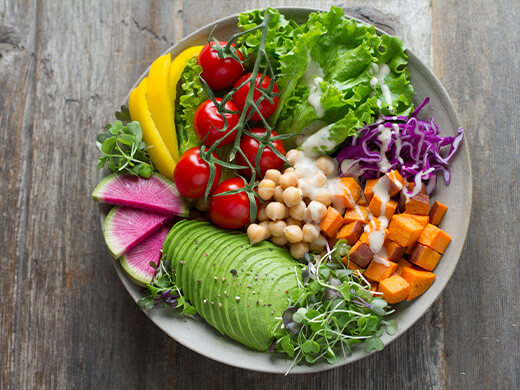 Rather than dictating a list of foods to enjoy or avoid which only disconnects us from the source we are trying to nourish (i.e. our bodies), a better option is to learn to eat mindfully. Our bodies are designed to signal us when it needs nourishment and when it’s had enough. The culture of our society has divorced us from these signals and instead encouraged an ideal body standard that we should all strive for, and a health industry that wants us to fit into rigid categories with diet and nutrition.
Rather than dictating a list of foods to enjoy or avoid which only disconnects us from the source we are trying to nourish (i.e. our bodies), a better option is to learn to eat mindfully. Our bodies are designed to signal us when it needs nourishment and when it’s had enough. The culture of our society has divorced us from these signals and instead encouraged an ideal body standard that we should all strive for, and a health industry that wants us to fit into rigid categories with diet and nutrition.
Rather than using food as reward or punishment, what if we just paid attention to what our food tastes like and how it makes us feel during and after eating it? Here’s what that would look like.
The Basics
- Eat slowly. It takes 20 minutes for the body to register that it is full so the slower you eat, the more in tune you will be to feeling satiated.
- Stop vilifying food as bad or forbidden. Likewise, do not label food as “guilt free” giving yourself permission to overeat. Overeating a superfood is just as harmful to your body as overeating something you label as “bad”. It’s all abusive if you’re not listening to what your body needs.
- Eat mindfully. Look at the texture, the color, the shape of your food. Smell it. Chew it slowly. Put your fork down between bites. Pay attention to how it tastes and what happens in your mouth as you eat. Where is your mind when you’re eating? Are you thinking about your to-do list? Are you watching tv, scrolling social media, or typing emails? Can you give your meal 10-20 minutes of undivided attention?If all this sounds overwhelming, try just one of them for a week. Gradually, add more when the first one feels comfortable. If eating an entire meal undistracted sounds impossible, just try it for the first three bites.
- Listen & Learn: Ep84: How to Use ‘Intuitive Eating’ To Change Your Relationship With Food | with Melissa Costello
Level Up
While I’m not interested in arguing over the merits of keto vs. paleo vs. vegan vs. Bulletproof, I am interested in science based, personalized food recommendations. These two companies are doing just that in two different areas of science.
Viome: A gut intelligence test that samples your gut bacteria and provides a detailed list of foods that will enhance and optimize your bacteria for a healthy microbiome. More research is being done on the microbiome and scientists are discovering the deep connection it has to brain health, aging, immune function, and a multitude of other health factors.
I have been using Viome for several years and have found the recommendations to be insightful. I have seen improvements in my skin, energy levels, mood, detoxification abilities, and sleep. It has confirmed food intolerances and helped me feel more confident in the nutrition choices I make each day.
DNA Fit: There are many genetic testing companies now that will test your DNA and give you reports about your ancestry and health. DNA Fit is taking it a step further and telling you the optimal way to train and to eat based on your genes. They give you multiple reports regarding your ability to recover from exercise, your ideal ratio of strength to cardio training, how you react to alcohol, caffeine, fats, proteins and carbohydrates, and much more.
What I like is that they don’t just hand you a bunch of reports and say goodbye. They set up a call with you to go over the results and interpret what they mean and how you can apply their recommendations. In addition, there is a 90 day personalized workout program that you can choose based on your fitness goals.
While epigenetics is teaching us that our genes are not set in stone, DNA Fit is helping you understand your predispositions and how you can optimize them to work in your favor.
Are you practicing happiness?
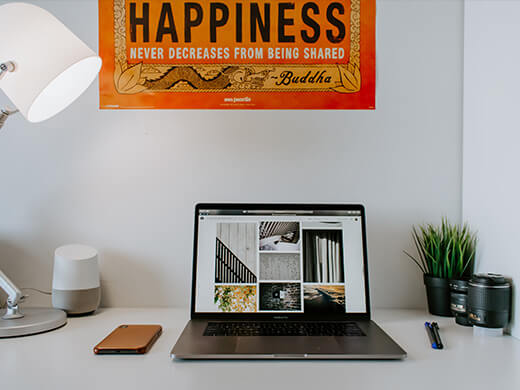 If I asked you if you wanted more happiness in your life, I’m guessing you’d say yes. I don’t think there are too many people that would turn that down.
If I asked you if you wanted more happiness in your life, I’m guessing you’d say yes. I don’t think there are too many people that would turn that down.
But if I asked you what practices you have in place to create more happiness in your life consistently, what would you tell me? Maybe you’d say you’re working on advancing your career or saving up to buy a home or go on a vacation (wait…traveling…what’s that?). While these are worthy goals to pursue, they do not provide happiness in the deeper, more fulfilling sense that I am talking about.
When I refer to happiness, I mean your inner life. Do you feel emotionally stable? Do you feel connected to yourself and your loved ones? Do you feel resilient, confident, and generally at peace with who you are and how you live?
These are the questions that get ignored during the pursuit of external goals and material things. We assume we’ll be happy once we get them only to discover that there’s simply another goal to chase or marker to achieve.
The truth is, happiness is not that complicated. There are simple practices that we can do every day to create more inner peace and resilience so that we actually enjoy the journey of life rather than waiting for a distant destination that continuously gets pushed further away.
The Basics
Gratitude. Keeping a gratitude journal is a simple and easy way to incline the mind towards the good that you have rather than what you don’t have. It only takes a few minutes and doesn’t require anything but a pen and paper. I like to do it at the end of the day so I can reflect back on what I appreciated.
Write down 3 things that made you smile that day. They can be simple things like seeing the sun rise, getting outside for a walk, or smelling your morning coffee. What you’ll find is that with practice, your mind will tune into what’s enjoyable and soon that will be a greater focus of attention.
- Listen & Learn: Ep20: Rewiring Your Brain to Be Happier | with Shane Burcaw
Level Up
Meditation. Everyone knows the importance of training their bodies, but often we neglect to train our minds. The quality of our mind determines the quality of our lives. Meditation trains us to bring awareness to our thoughts, notice their effects, and make a choice on how we will respond. This is in contrast to getting yanked around by our thoughts and being pushed and pulled in every direction, leaving us feeling overwhelmed and out of control.
Meditation reduces anxiety, increases resilience, improves focus and concentration while providing a sense of inner peace and wisdom. But don’t take my word for it, try it out for yourself and see how you feel.
Here’s a simple practice to get started:
- Sit, stand, or lie down in a comfortable position. You want to be relaxed but alert.
- Set a timer for 5 minutes.
- Close your eyes or keep them open with your gaze soft and downward.
- Bring your attention to your breath. Pick a spot where you feel it most. It could be the belly, the nostrils or the upper lip. Get curious about how the breath feels.
- If it helps, use a silent note of “inhale” and “exhale”.
- When you notice that your attention went somewhere else, smile. You’ve just succeeded at meditating!
- Return your attention to the breath and repeat steps 4-6.
The simple act of returning the attention over and over to a single object is training the mind to come back to the present moment. It’s training it to not get lost in the endless stories and ruminations responsible for much of our unhappiness. It’s cultivating patience and instilling a calm that releases the urge to react to every trigger or emotion that crosses our path. Over time, we build up the inner peace inherent in all of us and we bring it to the forefront of our experience.
Optimize Yourself
Practice Generosity. There are numerous studies that show how much happier people report being when they give to others. One study even showed that just thinking about giving money to a friend was enough to produce a boost in happiness compared to those who were told to keep the money for themselves. Time magazine reports,
Those who had agreed to spend money on other people tended to make more generous decisions throughout the experiment, compared to those who had agreed to spend on themselves. They also had more interaction between the parts of the brain associated with altruism and happiness, and they reported higher levels of happiness after the experiment was over.
And other research shows that making generosity a habit, increases life expectancy and improves overall health.
So where do we begin?
Think small. Give someone a compliment. Smile as you pass people on the street. Allow someone to get in front of you in traffic. Text an old friend or family member. Tell someone you love them.
Generosity is the fruit of gratitude. If you practice gratitude (see The Basics above), generosity will naturally grow.
And it’s okay if you’re doing it to feel good. It is a myth that being generous has to be a sacrifice and solely for the good of others. It may be a sacrifice, and it can still feel good. We all want to feel good and being generous is one of the best ways to do it. Everyone wins!
Getting Back to Basics Is Easier than It Seems
Life is always going to throw us more challenges, more bumps in the road, more obstacles to overcome. We’re not always going to know how to tackle them. It will require us to think on our feet and the more flexible we are, the better equipped we will be to roll with the punches.
Building resilience and flexibility requires that we first take care of the basics. Always go back to the foundational habits that we know will keep us grounded. Keep it simple and build from there.
- Drink enough water
- Move your body daily
- Practice breathing correctly
- Eat mindfully
- Practice happiness (inner peace)
It’s okay that your energy is depleted and your motivation has run dry. This pandemic is stretching all of us beyond our limits, and we have to constantly re-calibrate day by day. Be flexible and be patient. And slowly you’ll get back on the saddle, recharged and re-optimized to new levels of resiliency.
If you’re ready to build better habits, reduce chronic time famine, and manage the transitions of life like a pro, click here to receive my newsletter and be the first to know about enrollment for my new course on managing change & life transitions.
Continue to Listen & Learn:
The Mindful Editor | It’s Okay If You’re Not Ready to Be Productive
Ep55: How Tiny Changes Can Create Remarkable Results | with James Clear
Ep123: The Solution to Your Sedentary Lifestyle | with Ben Greenfield
Beginner’s Guide to Alleviating Chronic Pain In 5 Min a Day…Right at Your Desk [VIDEOS
Ep26: The Power of a ‘Mindfulness’ Practice | with Dr. Swati Desai
These 2 Breathing Techniques Will Make You Stronger
Ep122: ‘Superfood Hunter’ Darin Olien On How To Be Healthy, Fit, and Eternally Awesome
Ep84: How to Use ‘Intuitive Eating’ To Change Your Relationship With Food | with Melissa Costello
Your Body Is Not The Problem: Finding Body Acceptance in a Perfectionist Society
Can Giving Thanks to Suffering Increase Your Happiness
Ep20: Rewiring Your Brain to Be Happier | with Shane Burcaw
How to Strengthen the Mind for Greater Happiness: 8 Mind Training Practices

